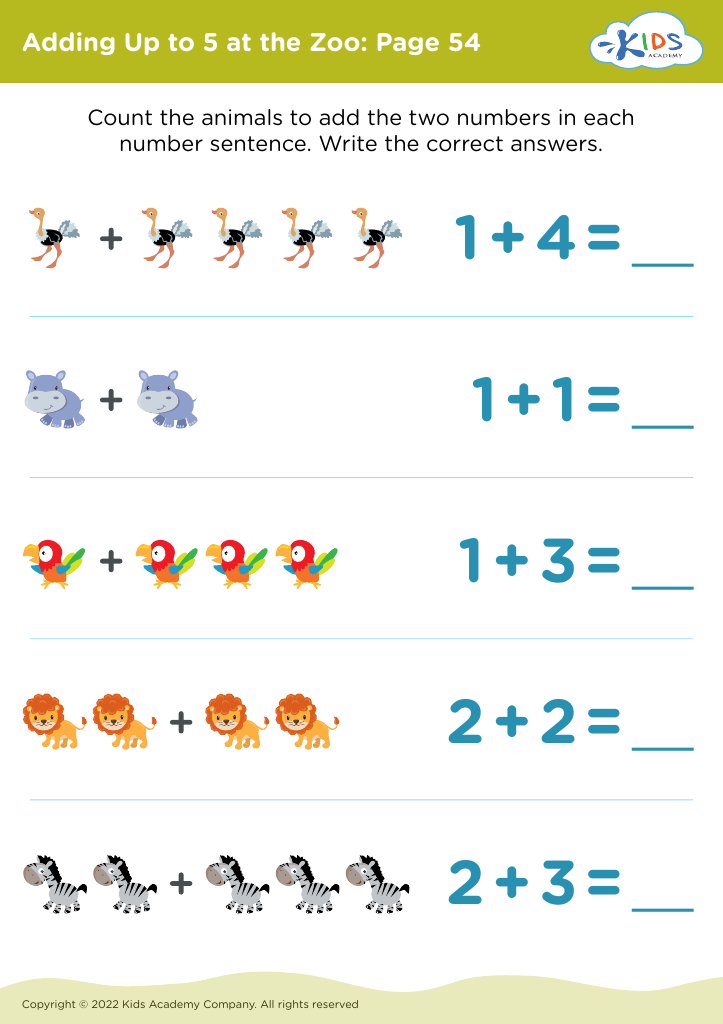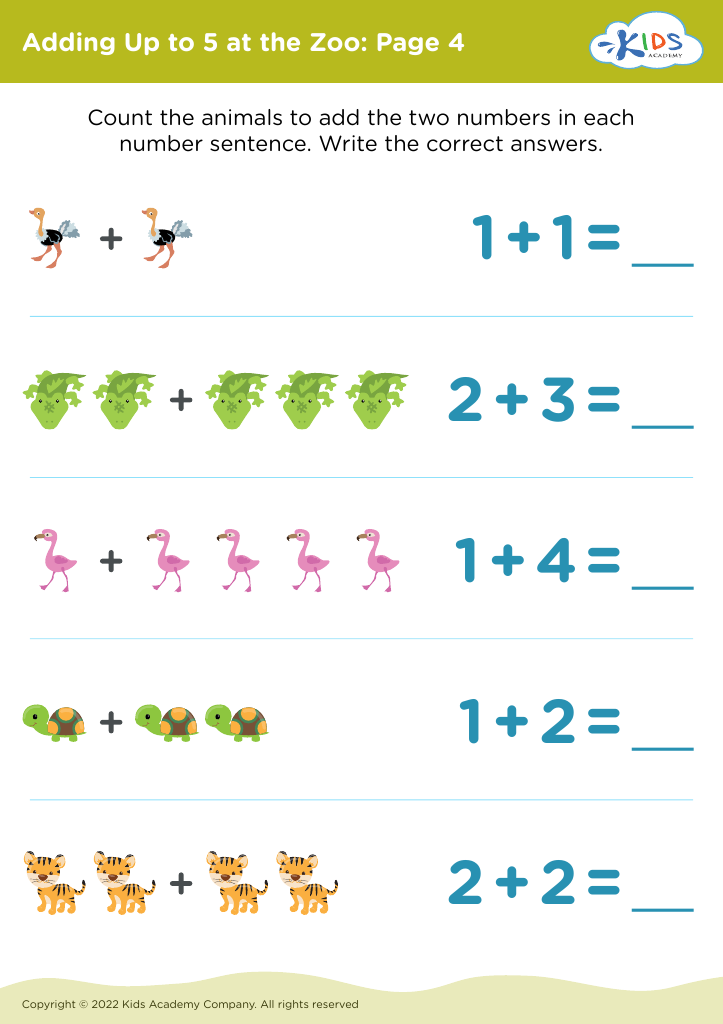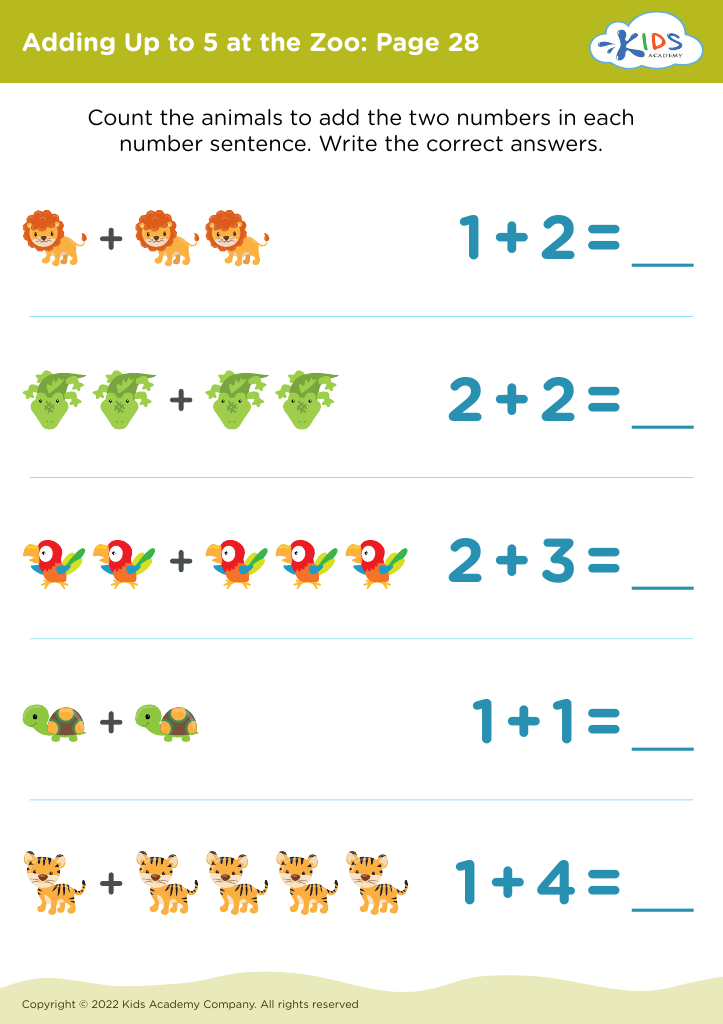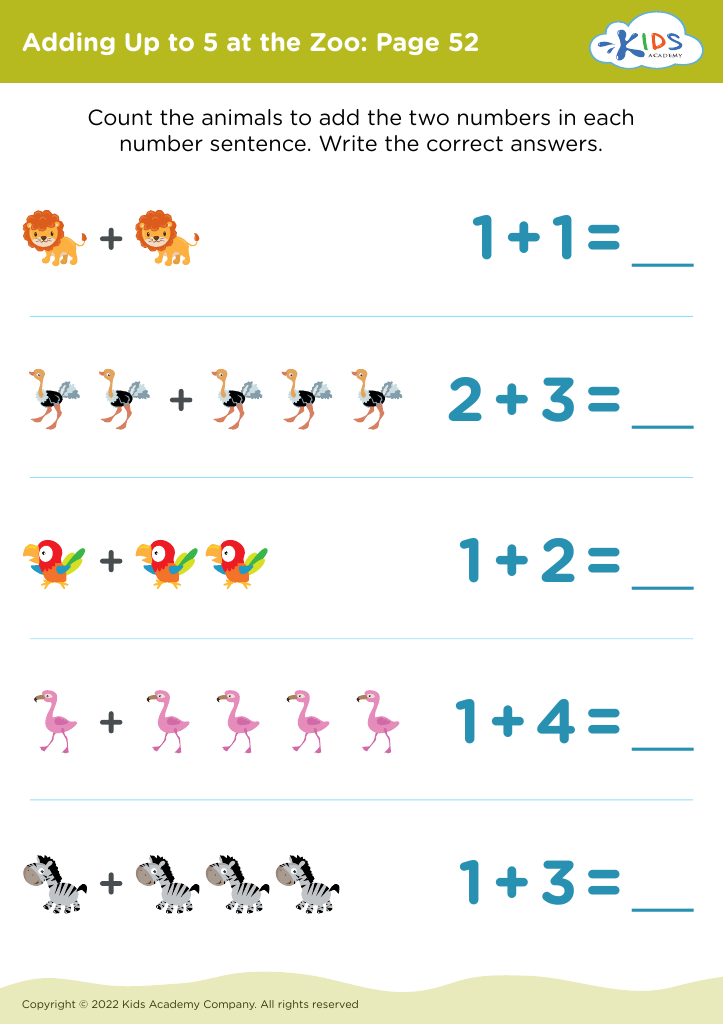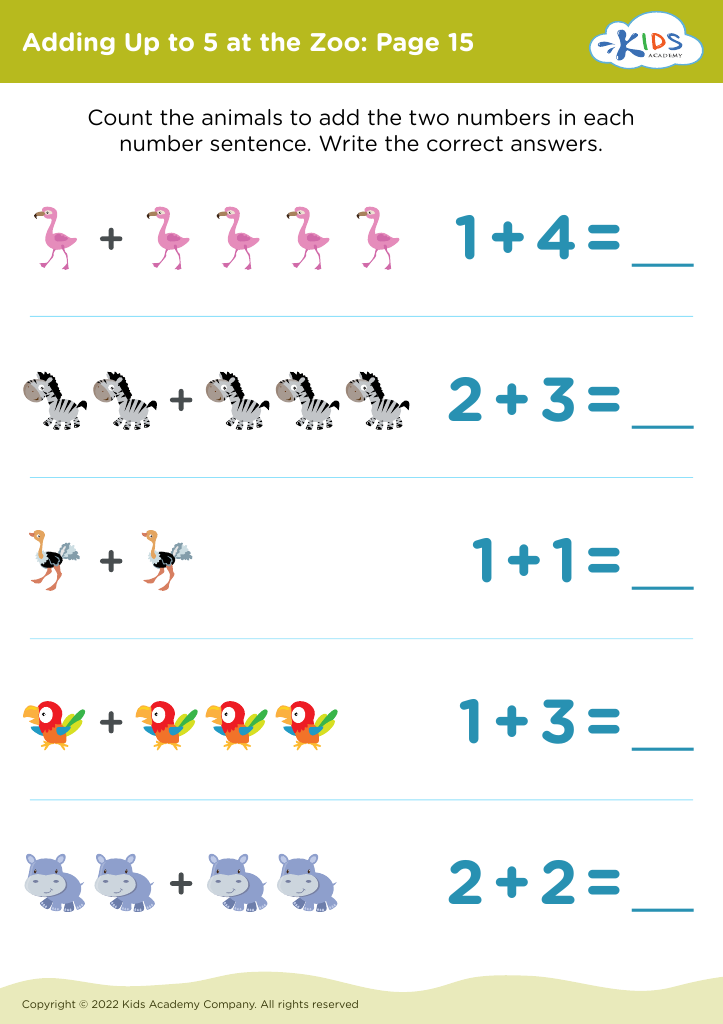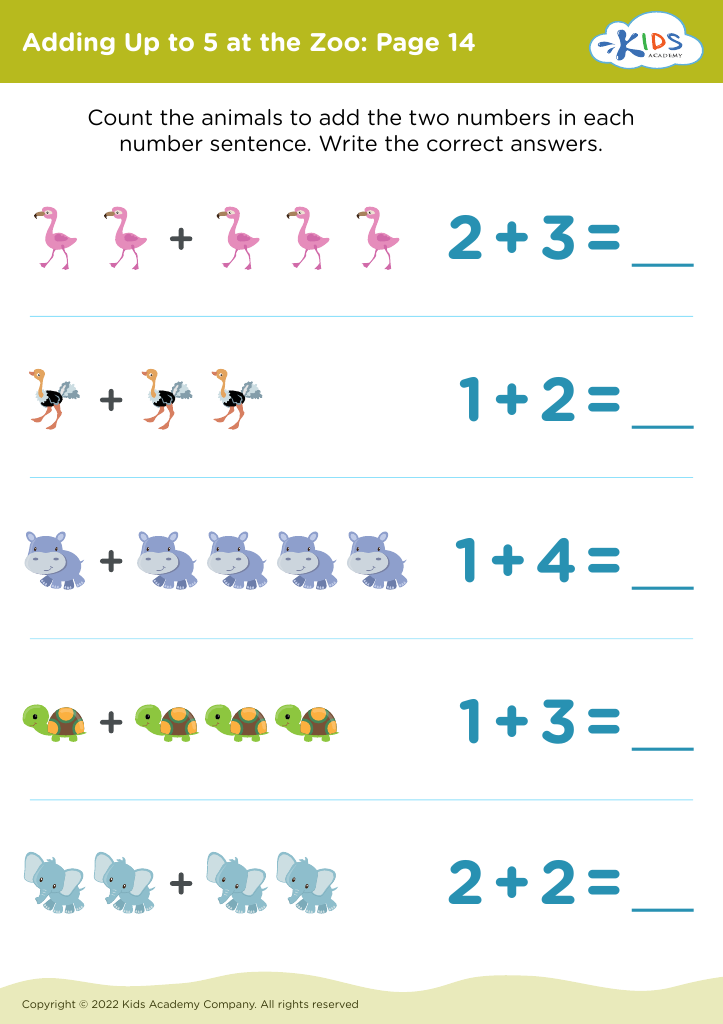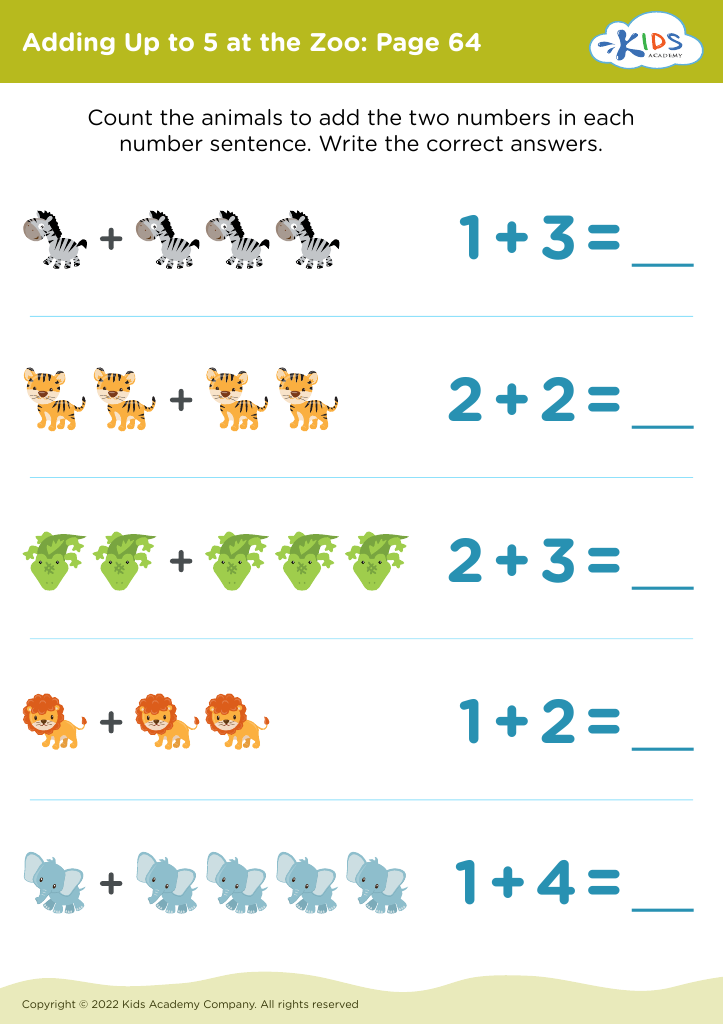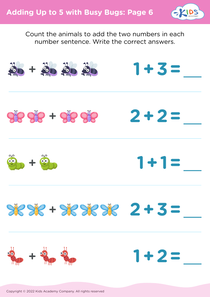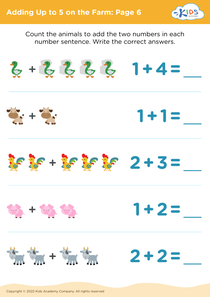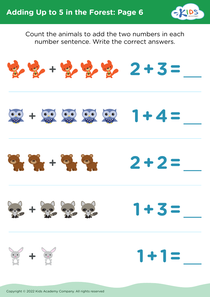Visual Learning Adding at the Zoo Worksheets for Ages 4-5
9 filtered results
-
From - To
Welcome to our "Visual Learning Adding at the Zoo Worksheets" for ages 4-5! Designed to make math engaging and fun, these worksheets help young learners grasp basic addition through colorful visuals of beloved zoo animals. Each worksheet combines playful imagery with simple math problems, fostering a love for learning in an exciting setting. Ideal for parents and educators, these resources help develop essential early math skills while promoting visual recognition and critical thinking. Dive into a world of numbers and animals, and watch your child's confidence grow as they explore the joy of adding at the zoo!
Visual learning is crucial for young children, particularly those aged 4-5, as it taps into their natural inclination for exploration and discovery. Programs like “Visual Learning Adding at the Zoo” capitalize on this by offering engaging and interactive experiences that reflect their interests. At this age, children learn best through vivid imagery and hands-on activities that stimulate their senses. By incorporating familiar zoo animals, the program captures their attention and encourages active participation.
Parents and teachers should prioritize such programs because they promote foundational math skills in an enjoyable manner. Visual learning helps children grasp concepts like addition by using visual aids, such as animal groups, to represent quantities. This approach makes abstract ideas concrete, aiding comprehension and retention.
Additionally, programs that combine education with play foster enthusiasm for learning. Instilling a positive attitude towards math at a young age sets the stage for future academic success. Furthermore, interaction with peers and caregivers during these activities enhances social skills and teamwork.
In essence, “Visual Learning Adding at the Zoo” not only builds essential math skills but also nurtures a lifelong love for learning, fostering curiosity and confidence in young children. This holistic development is something every parent and teacher should value wholeheartedly.
